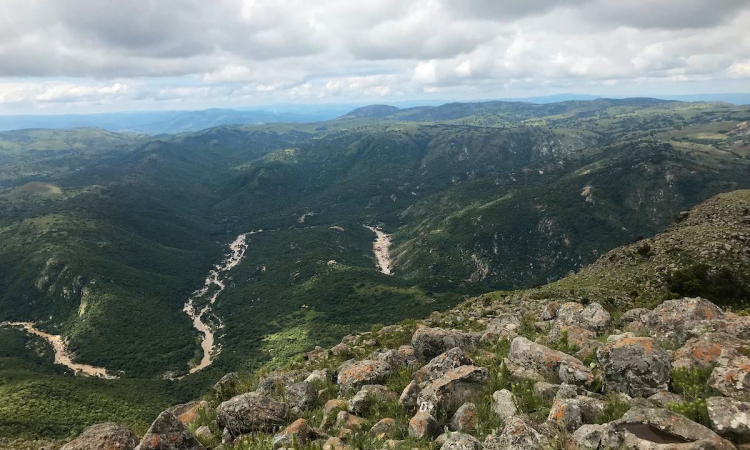Eswatini undertakes financing training for its Protected Areas with Wilderness Foundation Africa’s Innovative Finance Team
Eswatini’s Protected Areas (PAs) cover approximately 4% of the country and are rich in biodiversity with their share of endemism as represented in various ecosystems. Travel and tourism, especially to Eswatini’s Protected Areas, contribute to approximately 5,7% of the country’s GDP. The country has set a target under the Strengthening the National Protected Area Systems (SNPAS) Project to expand protected Areas from 3.9% to 6% of the country. Also, Target 11 of the National Biodiversity Strategy and Action Plan states that at least 10 per cent of Eswatini’s areas are of importance to biodiversity and ecosystem services. As such, protected landscapes are to be conserved through effectively and equitably managed connected systems.

The conservation of ecosystems and species in line with the National Development Strategy (Vision 2022) is required in order to secure these natural assets. Unstainable utilization and overexploitation of resources, as well as a financing shortage, threaten the expansion and management of these areas and the corresponding livelihoods they support. This impedes sustainable development. In order for Eswatini’s Protected Areas to achieve their environmental, social and economic outcomes, addressing the challenge of adequate financing and resourcing is needed.
Wilderness Foundation Africa (WFA)’s Head of Innovative Finance, Candice Stevens, conducted a three-part webinar series in Protected Area Financing and Resourcing Training to assist Eswatini in beginning to address this challenge, in partnership with the Eswatini National Trust Commission (ENTC). This webinar series forms part of the SNPAS Project which endeavours to facilitate capacity building regarding protected area financing and resourcing. The webinar was presented to the key stakeholders noted within the SNPAS Project. The training focused on conservation finance that pertains specifically to protected areas as well as innovative finance, which moves beyond traditional funding mechanisms and focuses on the development of new and sustainable financing models. This training and capacity development allowed for both technical knowledge exchange as well as intensive and interactive engagement with stakeholders that will provide an opportunity to innovate, test and to apply new financing ideas and models which can be used to galvanise this approach in the country.

The webinar series was preceded by a survey to gauge protected area stakeholders’ perception and experience on the adequacy of protected area financing and resourcing and on the need for capacitating protected area stakeholders to embark on developing innovative finance mechanisms for Eswatini’s protected areas. Results from the survey revealed that 85% of respondents believe that the protected areas where they work are insufficiently funded to achieve their conservation goals. 61% believe that a combination of reduced pressure on the protected area(s) and increased funding will be required to achieve conservation goals. Furthermore, 69% of respondents are not aware of alternative financing mechanisms, other than traditional mechanisms such as donor funding or government grants for protected areas. Importantly, 77% of respondents feel that the protected area(s) where they operate are not adequately valued, while this is an important factor to bolster political support and boost the social relevance of protected areas.
The overwhelming majority of respondents also believe that the following approaches are ‘Very Important’ or ‘Important’ for effective conservation and financial sustainability in the protected area(s) where they work:
- Managing funds to promote cost efficiency and management effectiveness;
- Building a diverse funding portfolio;
- Factoring finance into protected area planning and management processes;
- Integrating community needs and local impacts as part of finance solutions;
- Integrating nature’s services and their value into the national economy and
- Providing incentives and opportunities for managers of protected areas to generate and retain funds.
Finally, respondents to the survey indicated that their organisation or protected area(s) would ‘Very likely’ or ‘Likely’ be willing to use the following to advance the skills of protected area stakeholders:
- Using best practice guidelines.
- A toolkit of mechanisms to finance protected areas.
- Training and capacity building workshops.
- Webinars on specific topics in protected area finance.
- Online training programs.
Advancing protected area stakeholder skills in driving or developing innovative finance mechanisms is imperative for Eswatini’s protected areas to become sufficiently and effectively financed. This was indicated in the national survey with the respondents indicating that their organisation or protected area(s) would ‘Very likely’ or ‘Likely’ be willing to use a suite of tools to advance the skills of protected area stakeholders.
To this end, WFA, in conjunction with the Sustainable Landscape Finance Coalition, will be conducting the first Conservation Finance Boot Camp for the country to showcase innovative financing concepts, provide training and knowledge sharing opportunities and SADC’s first Lion’s Den where participants can pitch their ideas to experts and funders.
Please contact: Candice Stevens, Head: Innovative Finance and Policy| Chair: Sustainable Landscape Finance Coalition
Authors: Candice Stevens (WFA), Lindani Mavimbela (SNPAS Project), Ellané van Wyk (WFA)
Shop for a cause
Shop on amazon.com | amazon.co.uk


